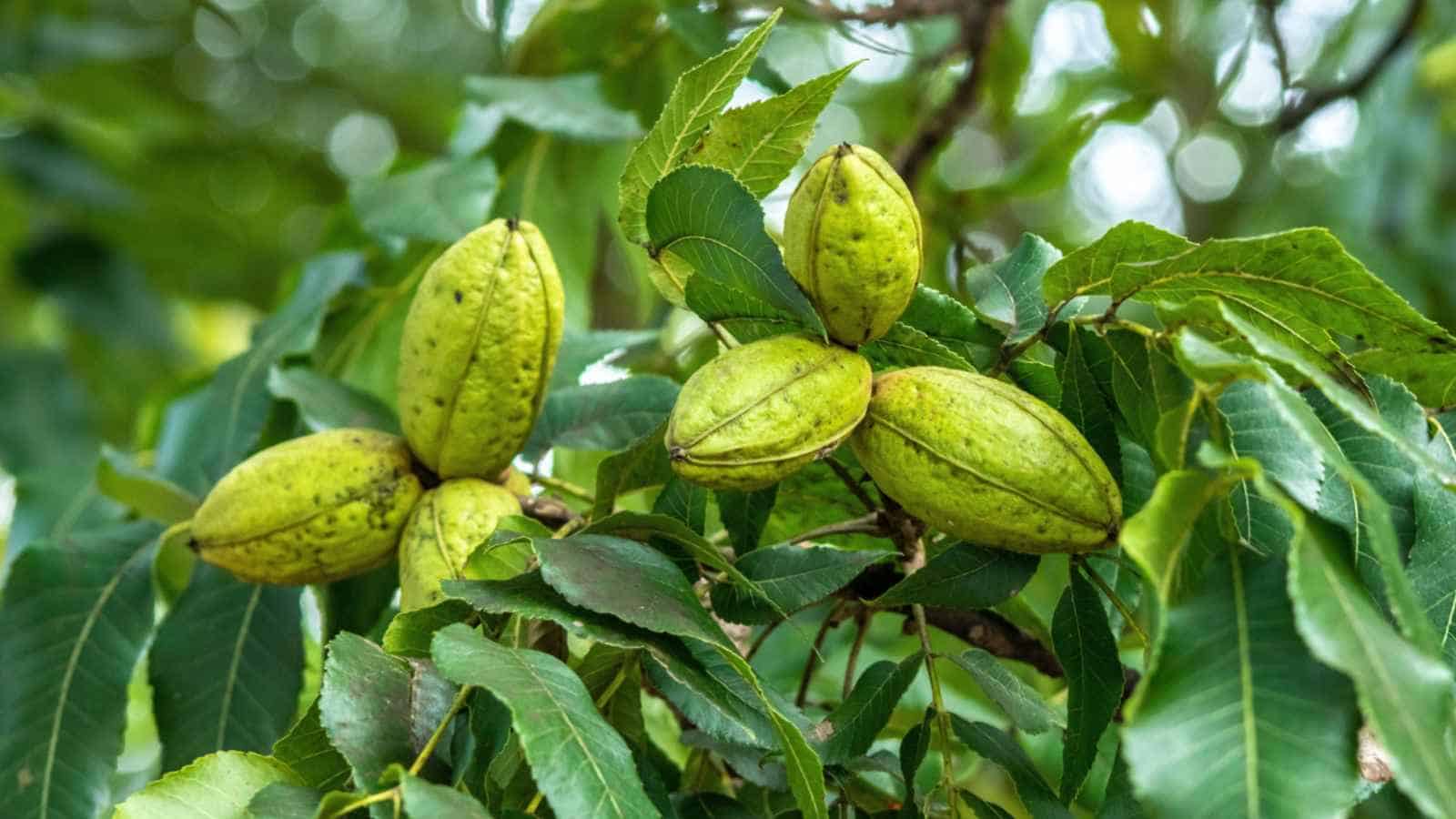There’s a whole lot of shakin’ goin’ on in Missouri pecan trees

COLUMBIA, Mo. — Pecan trees are shaking and shimmying as growers harvest pecans in Missouri, says University of Missouri Extension horticulturist Michele Warmund.
During harvest, mechanical shakers are clamped around the trunk of pecan trees. They generate a vigorous vibration that causes the pecans to drop from the tree. After harvest, nuts are sorted from debris and allowed to dry for about two to three weeks to a kernel moisture of about 4%. In-shell pecans can be mechanically dried on a large scale. For small-scale drying, nuts can be hung in heavy-duty open-weave mesh bags or spread out on wire racks.
After drying, in-shell pecans can be refrigerated for up to four months or frozen for long-term storage.
In Missouri, native pecan trees are usually found in well-drained, fertile soils along rivers and streams and in deep upland soils in the river hills. However, growers typically use improved pecan cultivars due to their larger kernel size. Recommended cultivars for Missouri are northern types, which are adapted to a shorter growing season and lower winter temperatures. Despite their relatively small nut size (100 to 180 nuts per pound), the northern pecan kernels are sweet and flavorful.
Pollen shed from male catkins and receptivity of female flowers do not coincide within the same pecan tree. Cultivars that have catkins that shed pollen before the female flower parts are receptive are classified as protandrous or type I. Some of the more widely available protandrous cultivars are “Hark,” “Gardner,” “Liberty,” “Major,” “Pawnee,” “Shepherd,” “Thayer” and “Yates 68.”
Protogynous or type II cultivars develop female flowers that are receptive before pollen is shed. ‘Earlton,” “Kanza,” ‘Lakota” and “Oswego” are protogynous cultivars. For adequate cross-pollination, a protandrous cultivar is planted within 250 feet of a protogynous cultivar. Forr ecommended cultivars by region and their nut characteristics download the MU Extension publication “Growing Pecans in Missouri” at https://extension.missouri.edu/af1002.
Because pecan trees grow 70-100 feet tall and 25-75 feet wide at maturity, they are most often grown on large acreages. In addition to pecan scab disease, pecan nut casebearer, hickory shuckworm, pecan weevil, fall webworm and walnut caterpillar can be problematic.
Fortunately, there are several commercial pecan orchards located in Missouri, especially in Bates, Vernon and Chariton counties, where pecans can be purchased and enjoyed fresh or as an ingredient in many tasty dishes and confections.
Miss Clipping Out Stories to Save for Later?
Click the Purchase Story button below to order a print of this story. We will print it for you on matte photo paper to keep forever.

